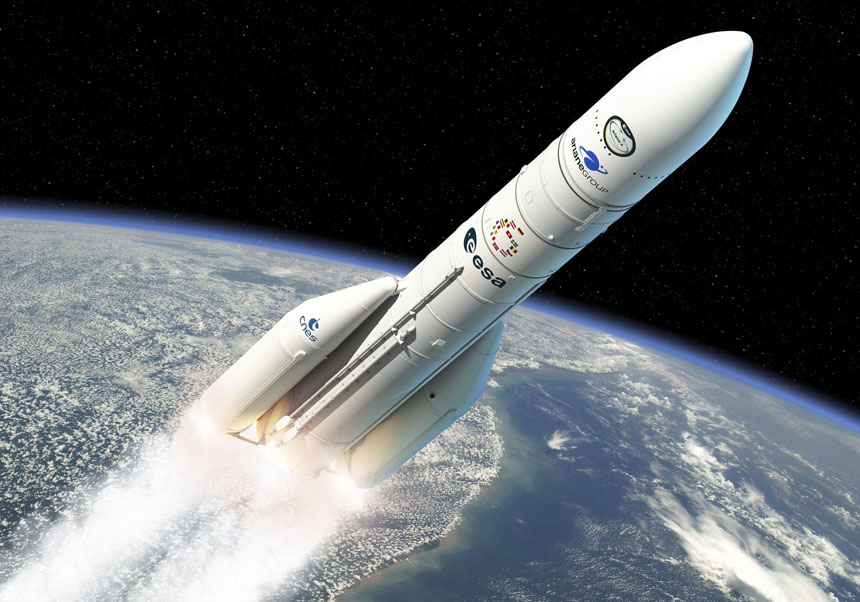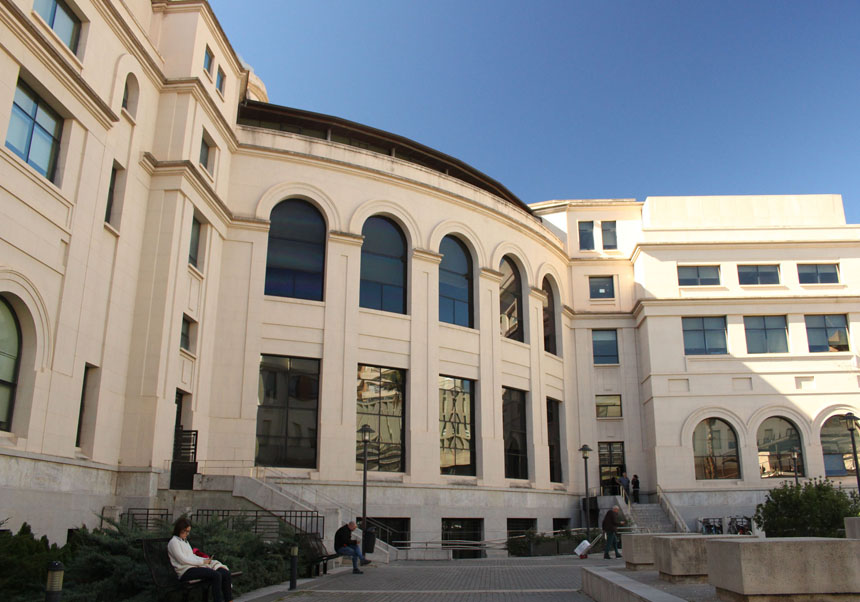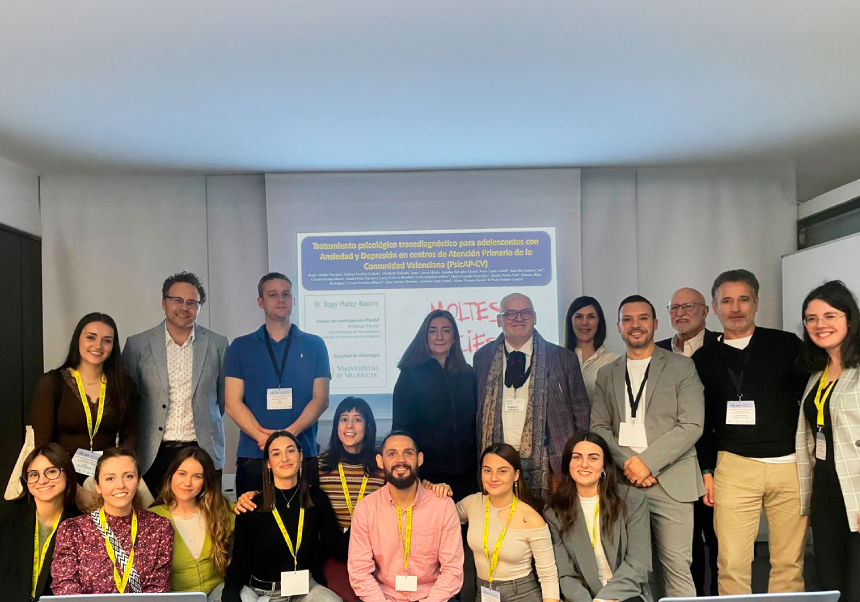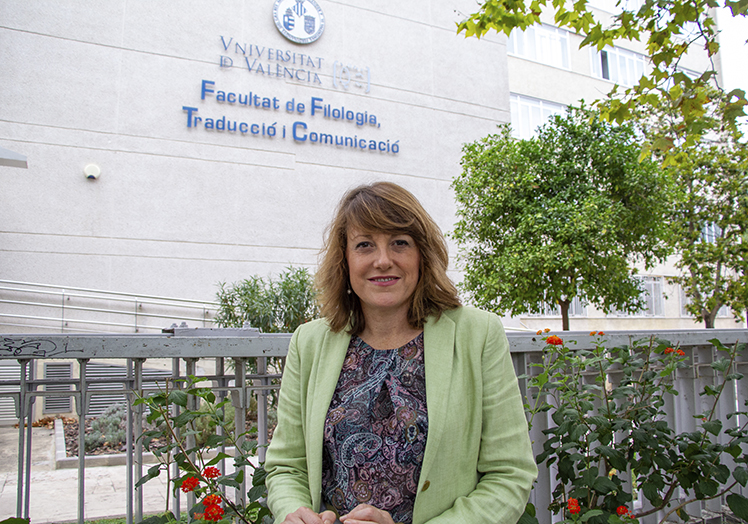The University of Valencia takes part in PLATO, the first scientific mission to fly on board the new European rocket Ariane 6
- Scientific Culture and Innovation Unit
- February 10th, 2025

The European Space Agency (ESA) has signed an agreement with the space transportation company Arianespace during the European Space Conference in Brussels (Belgium) to launch its PLATO mission at the end of 2026. The University of Valencia, a member of the PLATO Spain consortium, is participating in the mission by leading the design of part of the software for analysing the data that PLATO will provide, as well as contributing to the generation of stellar models to interpret these data.
The team at the University of Valencia (UV) is led by Andrés Moya Bedón, researcher in the Department of Astronomy and Astrophysics, and also includes Juan Fabregat Llueca and Míriam Rodríguez Sánchez. This team has been actively collaborating on the mission since its inception.
“At the UV, we contribute to the design and development of one of the most important components of the mission’s data analysis software. The main objective of PLATO is to discover exoplanets and characterise their masses, radii, ages, etc. To achieve this, it is crucial to determine these same values for the host stars with great precision. For this purpose, an automatic software system is being developed to extract a large number of stellar masses, radii and ages from PLATO’s data”, explains Andrés Moya.
The need for automation arises from the fact that PLATO is expected to observe hundreds of thousands of stars, making individual analysis unfeasible. The UV is leading the design of a module that prepares all the data for subsequent analysis. “The data we receive are heavily polluted and our module cleans all that up to ensure that later analyses encounter the least possible issues”, says the researcher from the University of Valencia.
Moreover, the final observations must be compared with stellar models to translate them into masses, radii and ages. “At the UV, we also contribute to selecting the best code to perform part of this work—generating stellar pulsation modes and applying a technique called asteroseismology, in which we are experts. To achieve this, we use our own stellar pulsation code, GraCo, which is one of the codes being used in the preliminary studies for the mission’s preparation”, adds Andrés Moya.
Over the last 15 years, high-precision photometric space missions, developed by the world’s leading space agencies, have driven significant advances in stellar physics and exoplanetary science. In this context, ESA’s pioneering PLATO mission (PLAnetary Transits and Oscillations of Stars) has been designed to discover potentially habitable planets around Sun-like stars. Its goal is to study thousands of exoplanets in detail, with a particular focus on terrestrial planets —rocky and primarily composed of silicon, oxygen and metals— in contrast to gas giants such as Jupiter or Saturn.
Planethunter PLATO will be the first scientific mission to travel aboard Ariane 6, Europe’s new heavy-lift rocket, which is equipped with two boosters to facilitate its launch from the European Spaceport in French Guiana at the end of 2026. The spacecraft will be placed in orbit around the Sun-Earth Lagrange Point L2, located 1.5 million kilometres from the launch pad.
To fulfil its mission, PLATO will use 26 cameras to observe more than 200,000 stars simultaneously in search of orbiting planets. To detect them, it will employ the transit method, which consists of identifying the dimming of starlight that occurs when a planet passes in front of its host star. By analysing this dimming, scientists can determine the planet’s size, mass and density. The scientific instruments on board are the result of collaboration between ESA and the PLATO Mission Consortium, which brings together European research centres, institutes and industries.
Spain plays a key role in the PLATO mission by providing the on-board computers that will process all images and scientific data, as well as the thermomechanical structures of the 26 cameras and the thermal vacuum calibration of 10 of them. Additionally, Spain is involved in the development and implementation of new tools for the analysis and processing of the data that the satellite will generate during the four years following its launch, scheduled for late 2026.
The PLATO Spain consortium includes members from seven leading Spanish research centres: the University of Valencia (UV), the Institute of Astrophysics of Andalusia (IAA-CSIC), the Institute of Astrophysics of the Canary Islands (IAC), the Centre for Astrobiology (CAB-CSIC/INTA), the National Institute for Aerospace Technology (INTA), the Institute of Space Sciences (ICE) and the University of Granada (UGR).
The Ariane 6 conducted its maiden flight in July last year, and its second launch is scheduled for next March, with an increased frequency of missions in the following months. This new heavy-lift rocket, the latest developed in Europe, has been designed to offer high power and flexibility at a lower cost than its predecessors. Its configuration, which includes an upgraded main stage, the option of two or four powerful boosters and a new restartable upper stage, enhances efficiency and versatility for a wide range of missions.
Reference:
‘Planet hunter Plato to fly on Ariane 6’
https://www.esa.int/Science_Exploration/Space_Science/Plato/Planet_hunter_Plato_to_fly_on_Ariane_6
File in: Recerca, innovació i transferència , Facultat de Física , Astronomía i Astrofísica , Internacionalització recerca , Grups de recerca , Difusió i comunicació científica , Investigació a la UV
















